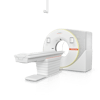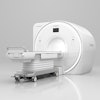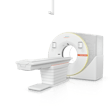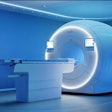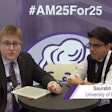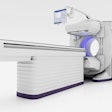Monday, November 27 | 12:45 p.m.-1:15 p.m. | CH238-SD-MOB2 | Lakeside, CH Community, Station 2
With all the excitement over CT lung cancer screening, radiography has largely been forgotten as a lung screening tool. But could digital tomosynthesis make it relevant again? Researchers from Italy will address that question in this Monday afternoon presentation.Cuneo is a small town in northwestern Italy that's part of a district where lung cancer rates have been rising quickly. Therefore, Hospital Santa Croce Cuneo implemented a lung screening program involving radiologists, physicists, and thoracic surgeons to detect and treat early lung cancer, according to presenter Dr. Gianluca Firullo.
But rather than screen only with CT, the group also added digital tomosynthesis (DTS) to the program to assess its value. Tomosynthesis could offer an alternative to CT that's cheaper and has a lower radiation dose, Firullo told AuntMinnie.com.
"The aim is to show that tomosynthesis can be an efficient alternative to the more expensive and higher-dose CT for the detection of nodules > 5 mm," he noted.
The researchers enrolled 1,843 patients from a group with a high risk of lung cancer, based on inclusion criteria that included a 20 pack-year smoking history, age 45 to 75, no previous cancer findings for the past five years, and no previous chest CT scan. Patients received two digital tomosynthesis studies, one at baseline and the second after a year.
Digital tomosynthesis studies were considered suspicious when a nodule 5 mm or larger in diameter was detected, or in patients with multiple noncalcified nodules. In these patients, CT scans were performed with and without contrast, and this was considered the gold standard.
In all, 132 patients were classified as having positive studies, with 208 nodules detected with DTS and 179 by CT. Eleven patients were found to be positive at baseline DTS, while CT studies were negative.
Compared with CT and using the 5-mm threshold for a positive finding, digital tomosynthesis had a true-positive rate of 96%, a false-negative rate of 2%, and a false-positive rate of 2%. Using a receiver operating characteristic (ROC) analysis, CT had an area under the curve (AUC) of 89%, compared with 80% for DTS.
Thus, CT had a slight edge in nodule detection, but DTS produced much lower dose, at a mean effective dose of 0.09 mSv, compared with a mean effective dose of 4.9 mSv for CT.
The findings reinforced the team's belief in digital tomosynthesis as an effective modality for lung cancer screening, Firullo told AuntMinnie.com. The hospital began the second stage of its lung screening program in September and hopes to acquire more patients for further comparison of DTS and CT.
"DTS can play an efficient role in a lung cancer screening program because of its lower dose, cost, and examination time," the group concluded.
